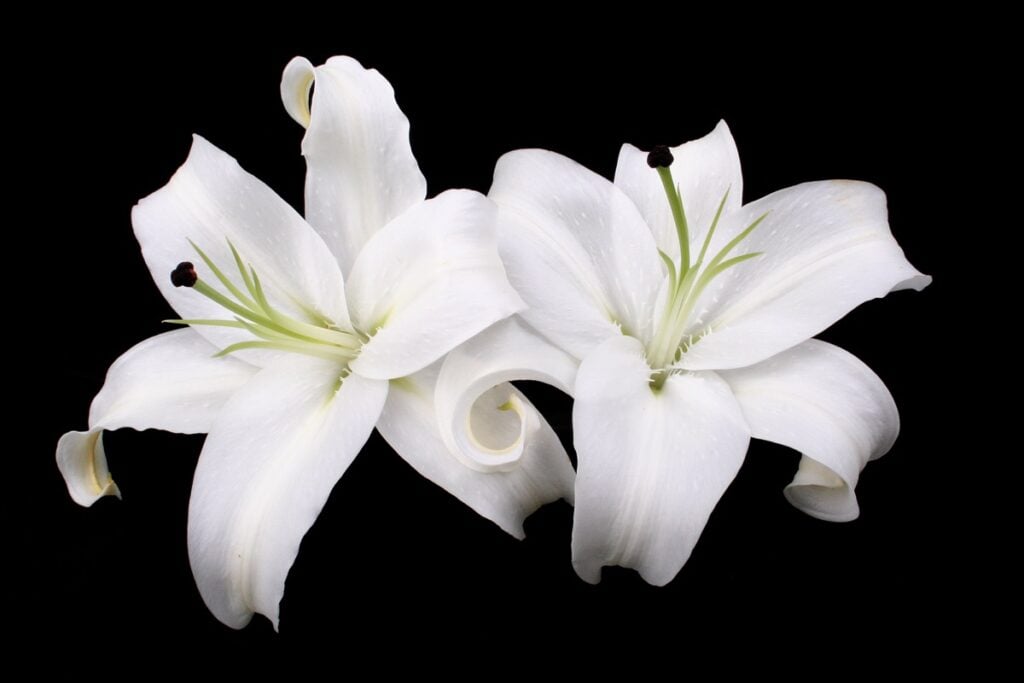Flowers are an integral part of funeral arrangements, serving as a tribute to the deceased while offering comfort to grieving families. Selecting the right flowers and arrangements allows for personalization and meaning. Below, we explore the types of flowers, arrangements, cultural considerations, purchasing tips, and cost-saving strategies to guide families managing a funeral.
Types of Funeral Flowers
Each type of flower carries symbolic meaning, which can add depth to funeral arrangements. Here are some common choices:
- Lilies: Represent peace, purity, and the restoration of the soul to innocence.
- Roses: A versatile choice with meanings based on color—white for reverence, red for love, and yellow for friendship.
- Carnations: Known for their longevity, carnations are popular for sprays and wreaths. White carnations symbolize innocence, while pink signifies remembrance.
- Chrysanthemums: Frequently used in Asian and European funerals, chrysanthemums signify honor and mourning.
- Orchids: White and pink orchids convey eternal love and sympathy, making them a popular choice for memorials.
Common Funeral Flower Arrangements
Funeral flower arrangements are designed to honor the deceased and bring comfort to the bereaved. Here are the most common types:
- Standing Sprays
Displayed on easels, these prominent arrangements are typically placed near the casket or altar and include a mix of flowers and greenery. - Wreaths
Circular wreaths symbolize the eternal cycle of life and are a timeless option for funerals. They are versatile and can be personalized with different flowers. - Casket Sprays
Designed to sit atop the casket, these arrangements are usually chosen by the immediate family. Options range from simple designs to more elaborate displays. - Bouquets and Vase Arrangements
Smaller arrangements in vases or bouquets can be placed around the venue or given as keepsakes to family members. - Crosses and Hearts
Floral arrangements in the shape of crosses or hearts are popular for religious funerals, representing faith and love.
Cultural Funeral Flowers
Cultural and religious traditions heavily influence the choice and use of funeral flowers. Selecting culturally appropriate flowers ensures the service respects the deceased’s heritage and beliefs. Below is a summary of cultural customs:
- Asian Cultures
White chrysanthemums are the preferred flower in many Asian traditions, symbolizing mourning and respect. For more insights, visit Cultural Funeral Flowers Explained. - Hindu Funerals
Flowers such as marigolds and jasmine are widely used. Marigolds symbolize purity and the liberation of the soul, while jasmine signifies peace. - Buddhist Funerals
White flowers, especially lilies and chrysanthemums, are used to reflect humility and respect. - Christian Funerals
Flowers such as lilies and roses are commonly used, symbolizing resurrection, peace, and eternal life. Cross-shaped arrangements are a frequent choice. - Jewish Funerals
Flowers are not traditionally used in Jewish funerals, with families often requesting charitable donations instead. Simple arrangements, if included, are understated. - Islamic Funerals
Flowers are not a significant tradition, though simple white arrangements may be used to express purity and sympathy. - Latin American Traditions
Bright, vibrant flowers such as marigolds are often chosen to celebrate life and honor the deceased.
For a more detailed exploration of funeral flower traditions across cultures, see Cultural Funeral Flowers Explained.
How to Buy Funeral Flowers
Purchasing funeral flowers can be straightforward when you know your options:
- Local Florists
Many florists specialize in funeral arrangements and can provide guidance on traditional and personalized designs. - Online Flower Retailers
Online services offer convenience and delivery directly to the funeral venue. Look for retailers with funeral-specific options. - Funeral Home Packages
Some funeral homes include flowers as part of their service packages. This can save time, though it may be more costly. - Grocery Store Florists
Affordable and convenient, grocery stores often carry fresh flowers that can be used for DIY arrangements. - DIY Arrangements
Creating your own arrangements allows for a personal touch and can save money. Purchase flowers from local markets and follow online tutorials.
How to Get a Deal on Funeral Flowers
Flowers can be a significant expense, but there are ways to save:
- Shop Around
Compare prices from local florists, online retailers, and funeral homes to find the best value. - Choose Seasonal Blooms
Flowers that are in season locally are often less expensive and more readily available. - Simplify Arrangements
Opt for minimalist designs with fewer flowers and more greenery. - Reuse Flowers
Transition arrangements from the service to the burial site or use them in multiple parts of the ceremony. - Request Discounts
Some florists offer bereavement discounts or waive delivery fees for funeral orders. - Skip Extras
Avoid unnecessary additions like premium vases or luxury ribbons unless they hold special meaning.
Tips for Managing Funeral Flowers
To make the process as smooth as possible, keep these tips in mind:
- Plan Early
Start researching flower options once the funeral arrangements are finalized. This ensures timely delivery and better pricing. - Coordinate with the Funeral Home
Confirm with the funeral home about delivery schedules and placement of the flowers. - Set a Budget
Funeral costs can add up quickly, so establish a clear budget for flowers and stick to it. - Choose Meaningful Arrangements
Focus on designs and flowers that reflect the deceased’s personality and values. - Consult with Family
Involve close family members in the decision-making process to ensure the arrangements resonate with everyone. - Consider Alternatives
If flowers are not essential, explore alternatives such as candles, photographs, or charitable donations.
By thoughtfully selecting and arranging funeral flowers, families can create a meaningful tribute that reflects their loved one’s life and legacy. For more cultural insights and ideas, visit Funeral Flowers

